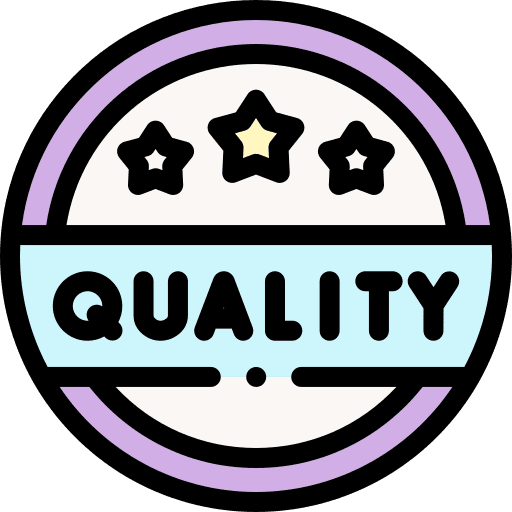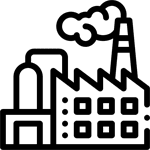General questions
How to buy, response, minimum order, price calculation and...
Considering that all Pack Polymer products are sold by the kilo, you can call 09125949458 to buy any product. Sending goods such as freezer bags, garbage bags, plastic with handles, sheeting, stretch, etc. in commonly used sizes and thicknesses should be at least 100 kg.
To order different products from 200 kilos to 100 tons and other weights you need, you can contact 09125949458 to negotiate and provide product specifications and order amount, get free advice and product sales conditions, to make the right decision. Adopt for your purchase.
The minimum order is 1000 pieces and the cost of bag, nylon, envelope, etc. is calculated separately and the printing cost is calculated separately for each number of colors and finally the total cost is announced. If your order is less than 1000 pieces, you will be charged for printing 1000 pieces due to technical reasons.
The response time is from 9 am to 9 pm, and messages, questions, images, files, videos, etc. can be sent around the clock through messengers and email Pack Polymer.
In order to estimate the price of the product, you have to add the price of raw materials, production cost, printing cost, sewing cost and shipping cost to get the finished price of your desired product.
Based on advanced equipment and high-quality raw materials, Pak Polymer production group, in addition to the production of first grade material, can produce other qualities required by its customers by receiving the desired sample from the customer and checking its quality.
The available dimensions and thicknesses are delivered within one day, and for orders that need to be produced, the required time is from one week to 20 working days according to the conditions and type of order. For example, an order of 500 kilos can be delivered in 3-5 days and an order of 25 tons in 20 working days.
The direct number of Pack Polymer Group management for essential calls...
Naturally, the price of partial purchases is higher than buying or ordering in large quantities.
Goods are delivered to the factory or other domestic destinations based on the customer's needs. If the customer wants the export and cargo delivery to be done at his destination, it can be done if the parties agree on the relevant obligations, conditions and costs.
Considering that the production of orders including printing and sewing requires different time compared to the production of film, therefore, it should be said that the production capacity of different films in Pack Polymer is 20 tons per day based on the type of film and the number of extruders and casting machines.
All kinds of orders related to the activities of this collection can be implemented in different dimensions and thicknesses within the framework of the standards of advanced Pack Polymer machines, and different and special printings are also done with flexo and heliogravure printing machines.
Technical questions
Polyethylene film (Nylon and Nylex), industrial stretch film Stretch Pallet Film, food stretch film PVC Stretch Food Wrap Film, sheeting film, design, printing and packaging, sewing machine for nylon, Nylex and cellophane, production machine for polyethylene film (stretch , Nylon Shering, Nylon, Nylex),
Polyethylene film (Nylon and Nylex)
Polyethylene film refers to flexible plastic products that are produced with polyethylene raw materials in different grades and in the form of rolls, and according to the composition of polyethylene raw materials and the use of different materials, it is possible to make a variety of special products such as nylon, nylon produced stretch, nylon shearing, etc., and all these products are named nylon polyethylene film, polyethylene shearing film, etc. after being produced and rolled.
The raw materials required for the production of different polyethylene films are different based on the final product, and for each of the films, they are produced by combining special grades of polyethylene materials. The primary polyethylene materials of PE Row Materials include light polyethylene LDPE, heavy polyethylene HDPE, linear light polyethylene LLDPE, etc.
The meaning of 3-layer and 5-layer polyethylene film is not that 3 or 5 layers of film are placed on top of each other, but multi-layer polyethylene films because they are produced with advanced machines that have three Mardon cylinders and new technology in the dominant part. are devices, they are produced that these devices can produce films with high strength, more tension and tissue density, resistant to environmental damage, etc., therefore, 3-layer and 5-layer polyethylene films like this are produced
Transparent polyethylene film is suitable for packaging products and laminating with other polymer films and has many applications in the production of food wrappers and packs, packaging of health and pharmaceutical products, production of plastic with handles and bags without handles, plastic production It has a zipper and adhesive, etc. Therefore, by applying secondary operations such as printing, sewing and cutting polyethylene film and becoming a new plastic product, they are used in the food, health, agricultural, store, etc. industries.
Milk polyethylene film, which is the same as white nylon in the term and is produced in 3 layers, with the purpose of packaging dairy products and bag liquids such as bag milk, buttermilk, cocoa milk, etc. They are sold in the market and are also widely used for the production of plastic with handles, tissue wrappers and baby diapers, sanitary napkin wrappers, etc.
The main difference between transparent, milky and colored polyethylene film is that in the production of non-transparent (colored) polyethylene, they use colored masterbatch, which usually produces colored polyethylene film by adding 1-5% of masterbatch to polyethylene raw materials. to be In addition to that, milky (white) polyethylene film, which is one of the colored types, will be used the most for printing on it and becoming packaging wrappers.
One of the advantages and characteristics of polyethylene film is that it has high softness and flexibility, good stretchability, light weight, strong protective coating, affordable price, health, recycling ability, ability to combine with compounds and properties givers, etc. is.
The dimensions of the 3-layer polyethylene film are calculated based on the width of the extruder and its winder, so factories that have different machines with different widths can produce polyethylene film from a width of 10 cm to 20 meters and also with a thickness of 30 microns. They can also produce up to 500 microns, which based on the equipment of advanced and modern equipment, Pack Polymer has the ability to produce single-layer, 3-layer and 5-layer polyethylene film in the aforementioned dimensions and thicknesses.
The differences between nylon and nylex include the following:
- Nylon has more softness and flexibility, can be produced with higher transparency, more elasticity, the ability to produce with a higher thickness
- and width, the ability to be laminated, a wider range of uses, etc.
Nylex has more dryness, less elasticity, more matte shape, can be produced in thin thickness and small width, more limited scope of use, etc.
All kinds of printed, non-printed (raw), patterned, promotional, etc. nylons with different handle models can be produced, which include: nylon handle, reinforced handle nylon, banana handle nylon, stirrup handle nylon .
It produces wide nylon, or wide polyethylene film, with devices that have towers and high floors and wider rollers, from 1 meter to more than 20 meters in width, and for uses such as covering the roof and walls of greenhouses, agricultural uses, The facade of buildings under construction, foundation, insulation, coating and packaging of equipment and very large parts, etc. are used.
How to calculate the length of nylon in relation to the kilogram unit depends on many things, these things include the thickness of nylon, the width of nylon, the degree of quality of nylon. Therefore, if you intend to calculate each square meter of polyethylene films in kilograms, you should pay attention to the above-mentioned points, and you can also get the answer to your question by contacting the experts of Pack Polymer Group.
One of the capabilities and advantages of polyethylene film is that it is possible to add properties-giving additives to its raw materials, so that the produced product has more capabilities. Some of the additives are:
- Anti-UV
- Anti-DUST
- Anti-Astatic Anti-Astatic
- Anti-Bacterial
- Prevention of metal corrosion (VCI) VCI
- Lubricant
- clarifying
- Other additives
Polyethylene films for printing and lamination purposes in rolls weighing 150 to 250 kg, wide nylon films weighing 40 to 45 kg, narrow films without the need for printing weighing 20 to 40 kg. be.
Stretch Pallet Film
Industrial stretch film is a type of polyethylene product that is produced by combining the raw materials of linear light polyethylene LLDPE and industrial stretch adhesive and can be presented in rolls in different dimensions and thicknesses, which has high elasticity and good adhesion for packaging. It is the classification of items.
Industrial stretch film is used by consumers with many names such as packaging cellophane, furniture cellophane, pallet band cellophane, stretch pallet, manual stretch, polyethylene stretch, etc.
The applications of industrial stretch film include packaging of pallets containing goods, packaging of boxes and cartons, packaging of agricultural fodder, packaging of furniture and wooden products, packaging of industrial and construction parts and equipment, etc.
The most used industrial stretch is with a thickness of 17 to 30 microns and the ability to produce from 14 to 50 microns is also available in the Pack Polymer collection. Industrial stretch is produced in various sizes including 10 cm wide, 50 cm wide and 2 meters wide, and the most widely used is 50 cm wide.
To calculate the purchase price of industrial stretch film, you must add the following items together to get the final amount, these items include: the price of linear light polyethylene material, the price of stretch adhesive (PIB), the amount of adhesive combined with the material, production cost and packaging, shipping cost.
Basically, when selling industrial stretch film, the price offered to the customer is including the cost of the bobbin, and the bobbins that have standard and suitable weights for each roll (light and heavy) are used. It should be noted that net stretch weight and bobbin weight will be mentioned separately in the customer's purchase invoice.
The stretch films produced in Iran are made with advanced and new devices and can compete with foreign products in terms of the quality of the final product.
According to the packaging method (manual or machine) and the taste of the target markets, industrial stretch can be produced in various weights, the most used weights are: 500 gram roll, 2 kg roll, 5 kg roll, 10 kg roll, 5 roll 16 kilos (consumption of Eastern European countries), 30 kilos roll, 50 kilos roll.
Basically, 500 gram bobbins are used for 2 to 5 kilo stretches, and 1 kilo to 1.300 gram bobbins are used for more than 10 kilo stretches.
If the customer wants to use lighter bobbins or other weights, Pack Polymer series can meet the needs of customers based on the standards of the shaft of the stretch film production machine and other methods.
The minimum order of colored stretch film is 3 tones, and the reason for not producing less is that the colored material will remain inside the machine and to produce the next order with other colors or transparently, the previous colored material must be emptied from the machine. so that it does not enter the color of the next order and does not cause two colors in the next production, therefore, the production of colored stretch will have such waste, therefore, by accepting a lower order, the production will eliminate the economic justification for the producer.
The fodder packaging stretch film, which actually takes over the task of traditional silos in fodder storage, is the same industrial stretch film and for agricultural use, due to the exposure of the packaged fodder to sunlight and open space, with anti-UV materials. Anti-UV and other properties required by the customer are produced to prevent damage to the fodder.
Manual stretch is produced in lighter rolls with less thickness so that it can be easily used for packing goods by human power, but machine stretch is produced in heavier rolls with more thickness.
The addition of various properties and compounds increases the properties and benefits of stretch film. For example, by adding VCI to the raw materials for the production of industrial stretch film, it is possible to use stretch enriched with VCI materials for packaging and covering metals to prevent corrosion and rusting of metals.
In the polymer pack collection, the produced stretch films are arranged on the pallet and protective MDF is placed on each floor of the arranged rolls to prevent the lower and upper rolls from being damaged, which finally, with the stretch film, The pallets will be packed according to a specific standard. If the customer's requirement is to use cardboard or other wrappers for the initial packaging of stretch films, it can also be done and there is no limit.
PVC Stretch Food Wrap Film
استرچ غذایی نوعی پوشش پلاستیکی بسیار نازک است که دارای کشسانی و چسبندگی نیز می باشد و به دلیل فود گرید بودن آن برای بسته بندی مواد غذایی مورد استفاده قرار می گیرد. مواد اولیه فیلم استرچ غذایی شامل مواد PVC ، رزین و چسب گیاهی میباشد.
Other names of food stretch are food protective cellophane, stretch PVC, food cellophane, food grade cellophane.
The production of food stretch (PVC) in the polymer pack collection is 8, 9, 10 microns thick and is offered in common widths of 39, 40, 44, 45 cm and with a length of 200 meters to 1000 meters, of course, based on customization. It is also possible to produce stretch food with the thickness, width, length and weight desired by the customer.
The most important and common uses of food stretch film include packaging and covering chicken, fish, meat, vegetables, salad, cooked food, semi-cooked food, etc.
5- Food stretch film (Production of food stretch film from 350 grams to 6 kilos and 550 grams takes place in the Pack Polymer factory and customization is also possible. VC) in what weights is it produced?
The most widely used additives in the production of food stretch film include anti-fog, anti-steam, anti-sweating and anti-fog, anti-bacterial, anti-bacterial, etc.
The difference between industrial stretch film and food stretch film is in the raw materials of these two products. Therefore, industrial stretch material includes linear light polyethylene and PIB glue, and food stretch material includes food grade PVC and vegetable glue.
Food stretch rolls are packed in such a way that they are first arranged in strong and quality cartons and then the cartons are placed on the pallet to be wrapped with industrial stretch film.
shrink film
Shring film is a type of plastic packaging that is wrapped around the product through heat (manual or machine).
Types of sheeting film materials include polyethylene (nylon) sheeting, PVC sheeting and POF sheeting. Nylon shirings are produced with polyethylene materials and PVC (polyvinyl chloride) and POF (polyolefin) shirings are produced with polypropylene materials.
The applications of polyethylene sheeting film include packaging and packing of all kinds of goods individually and in multiples, pallet sheeting, etc., for example, it is possible to use sheeting to pack mineral water bottles together, as well as pallet packaging, equipment packaging Homemade after production in the factory and large parts with wide nylon shearing pointed.
Cellophane sheeting, which is mainly printed, is used to cover all kinds of bottles, glasses, and food containers, and in some cases, it is used for packing various tools, parts, and accessories. For example, we can refer to the printed cover around the shampoo container and fruit juice bottle, etc.
The most widely used nylon sheeting is 35 to 150 cm wide and 50 to 90 microns thick.
Production of colored sheeting film is produced by adding color masterbatch to raw materials or template printing method, and in the production of transparent sheeting film, there is no need to add color masterbatch etc.
Nylon shearing is mainly produced in rolls weighing 20 to 40 kg based on its width, and the wide nylon shearing roll weighs 30 to 50 kg.
For packing several products together, such as beverage bottles, cans, etc., from polyethylene sheeting film (nylon sheeting) and for packing one product alone or up to 2 products of the same shape together, also for covering Cellophane sheeting film (PVC and POF) is used for containers and bottles.
The difference between polyethylene sheeting film and stretch film is as follows:
- Shrink film: less elastic than stretch, thicker than stretch, heat-wrapped, can be produced in a wider width, less transparent, produced with LDPE light polyethylene materials
- Stretch film: high elasticity, low thickness, adhesion, high transparency, production with linear light polyethylene material LLDPE
Shrink film production can be produced according to the customer's needs in different models, which include the following: intestinal shring film (tubular or tube), open side shring film, single layer shring film (sheet roll), 4 layer shring ( with cassette), cut shiring, pocket shiring (stitched) and...
Design, printing and packaging
Yes, the presence of an experienced and educated team for specialized designs in the printing and packaging industry in this collection can design your desired idea without making any mistakes in this field.
In order to print on polyethylene films such as nylon surfaces, nylon, polyethylene sheeting, etc., flexo printing machines are used. There are two types of flexo printing machines, including flexo stack and center flexo cylinder, for this purpose. are employed. Each of these printing machines has significant features, advantages and characteristics to perform quality printing on polyethylene films and can print images, logos, trademarks, text and writing in up to 8 colors.
Printing on cellophane surfaces is also done with an advanced center cylinder flexo machine and digital stereotypes and has a very favorable quality. Also, for technical and specialized reasons, it is optimal for printing lamination films and cellophane films, which are printed from the heliogravure printing machine. To be used in high tonnage.
In case of silk screen printing, 1000 bags, envelopes, sheets, fabric, kraft, etc. can be printed, and unlike flexo and helio machines, this machine does not have the ability to print on rolls. In silk printing, it is not possible to implement image designs and a large number of colors, and in order to print logos, trademarks, writings that are not small, and contact details, it is used on the desired material.
Yes, the large collection of Pack Polymer is equipped with mechanized production, printing, sewing, cutting and packaging lines and has the ability to carry out packaging operations based on the needs of its customers.
It is possible to print 1000 pieces of each type using the silk screen system, and for each color of the design, up to 1000 pieces, an amount of 550 thousand Tomans will be charged from the esteemed customers. For example, if one side of the printed surface needs two printing colors and the other side has one printing color, and even these three colors are the same (for example, all three colors are black), the printing cost is multiplied by 3 and the amount It will be one million six hundred and fifty thousand tomans.
Nylon, Nylex and cellophane sewing machine
These machines have the ability to sew polyethylene films to turn them into various products such as plastic with handles, bags without handles, food and hygiene packaging wrappers, garbage bags, freezer bags, etc.
Sewing machines for polyethylene and polypropylene films are designed and manufactured in different types, each of which is used based on the production of the desired final product. These machines are very diverse and we mention some of them, which are: center stitch, side stitch, bottom stitch, roll stitch with perforation, automatic roll stitch with handle, t-shirt bag stitch, trash bag stitch, etc. .
This machine has the ability to sew nylon and nylex to become a stiletto handle bag with high speed and technology, which has the ability to count, fold, arrange, etc. thanks to the robots of this machine in the advanced models of the T-shirt bag sewing machine.
This sewing machine has a high technology and complexity that sews nylon and nylex windows (polyethylene film) through various steps, including opening the window, removing wrinkles and smoothing the edge of the plastic, creating a punch to insert the strap, longitudinal sewing of the plastic, etc. Strapping the bag, cross-stitching, creating perforations, reinforcement matrices for the sides of the perforations, smoothing the edge again, plastic rolling, labeling, etc., turns into a strapped garbage bag.
The automatic sewing machine can deliver the final product at the end of the line without the need for human labor, and semi-automatic and simple machines require an operator or human labor to support the sewing flow.
Polyethylene film production machine (stretch, nylon sheeting, nylon, nylex)
5-layer and 3-layer stretch film production machines with a width of 2 meters, which have the ability to produce stretch rolls in various widths, are among the best types, and the stretch film produced with such a machine has a consistent and strong texture, high elasticity, and a threshold of pieces. The increase is the ability to consume less for packaging, etc. Finally, by using this device and high-quality materials, you will have one-handed rolls with a regular cut and no edges, a clear surface and no small bubbles.
Note that based on the polyethylene sheeting film model, you will need a suitable production machine for it, because the variety of sheeting film models includes intestinal, open-sided, single-layer (sheet), 4-layer, etc., and for example single sheeting La, which is in the form of a roll sheet, must be produced with a back-to-back machine, while the width of the film is directly related to the width of the rollers of the extruder production machine.
The wide nylon production machine can produce nylon in different widths based on the rolling axis, the upper roller of the tower, the dominant size, etc. Knowing these key points about being able to launch and produce with widescreen devices can improve your performance. The temperature settings of the burners, the dominant heat and the dominant body, the ventilation adjustment, the speed adjustment of the rollers, the engine speed, the wind adjustment, the speed of the roll picker, and many other important points must be followed in starting and increasing the performance of the wide polyethylene film production machine. .
Mostly, the machines that are made for nylon production have a smaller width than the machine for nylon production, and also the ABA and ABC extruder models are not particularly justified for nylon production, and conversely, it is very suitable and justified for nylon production. For the information of respected users And those interested in this industry should say that the most important difference between the nylon production machine and the nylon production machine is the extruder machine. Therefore, with one machine and replacing the main heads, it is possible to produce nylon and nylon.
The most important difference is that the simple or single-layer machine has one Mardon cylinder (with the exception of the chicken nylon production machine and twin or two-color extruder), while the three-layer polyethylene film production machine has 3 cylinders and Mardon, and the 5-layer model Also, in addition to three mardons, it has two layers in the extruder, which produces a 5-layer film with very high quality and an attractive appearance.





